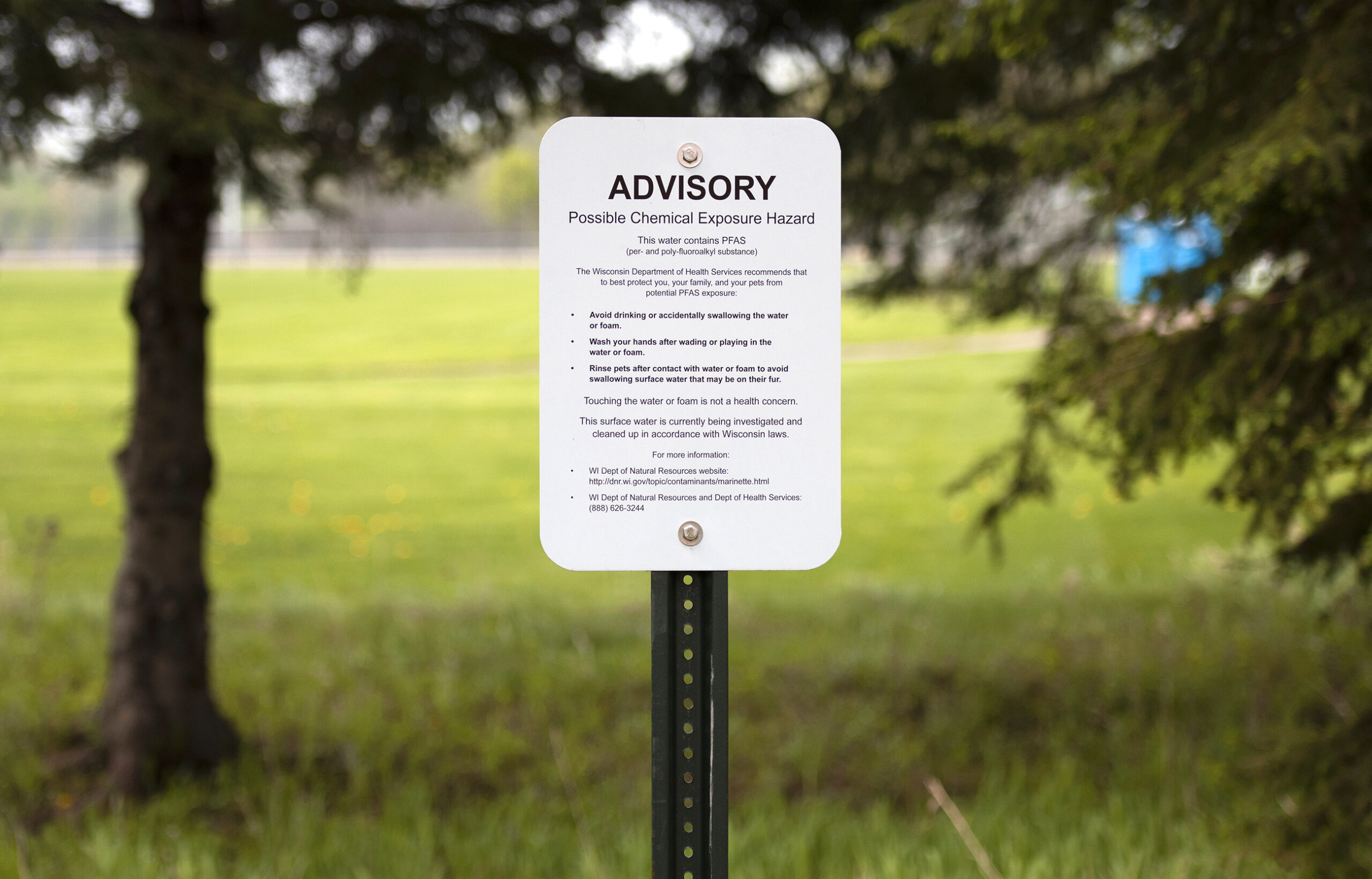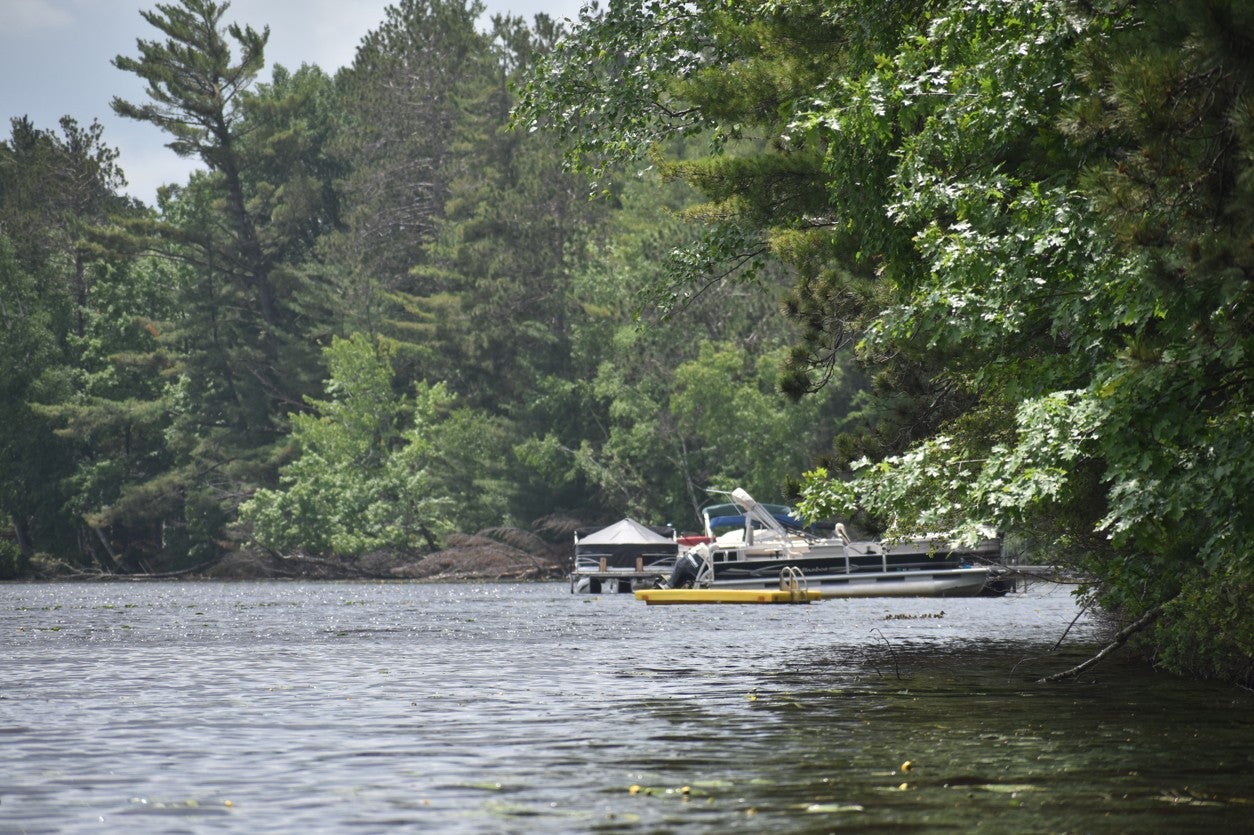The National Wildlife Federation released its recommendations Tuesday for addressing so-called forever chemicals known as PFAS.
The conservation group’s recommendations provide a roadmap to local, state and federal governments for addressing the chemicals in a report. The organization calls for creating an inventory of PFAS sources, identifying chemicals that pose the greatest threat to public health and the environment and expanding areas for monitoring substances in fish and wildlife.
In addition, the report urges policymakers to support research on the chemicals’ impacts on humans and wildlife, fund monitoring and cleanup of contaminated sites and explore cost-effective measures to treat chemicals in drinking water and wastewater.
News with a little more humanity
WPR’s “Wisconsin Today” newsletter keeps you connected to the state you love without feeling overwhelmed. No paywall. No agenda. No corporate filter.
The chemicals — per-and polyfluoroalkyl substances — are found in products like nonstick cookware and firefighting foam, and have been linked to cancer, thyroid disease and developmental issues in children when exposed at high levels. PFAS is persistent in the environment because it doesn’t easily break down.
Oday Salim, staff attorney for NWF, urged state and local governments to utilize federal clean water and safe drinking water laws, as well as those guiding hazardous waste cleanup.
“There’s really no good reason for states to wait around for the federal government,” said Salim, adding states can work with each other to develop standards to protect public health.
The U.S. Environmental Protection Agency is developing standards to address PFAS chemicals, but it may be five years or more before federal rules are in place. The EPA has issued a health advisory level of 70 parts per trillion.
The chemicals have prompted growing concern across the country and within Wisconsin.
Over the summer, Gov. Tony Evers asked state agencies to create enforcement standards for safe drinking and surface waters in addition to groundwater quality standards recommended in June.
“PFAS contamination is an open wound in Wisconsin that continues to harm the environment and the economy. After years of inaction, our hope is that state leaders will take the bull by the horns to confront this threat,” said Tom Johnston, chair of the environmental committee for the Wisconsin Wildlife Federation. “We’re heartened that the new governor is starting to take action to address dangerous PFAS levels.”
Environmental groups have criticized former Gov. Scott Walker for not acting quickly to address PFAS contamination. Republican lawmakers, including Rep. John Nygren, R-Marinette, have supported legislation to address the contaminants in firefighting foam and setting statewide standards.
Evers has also directed the Wisconsin Department of Natural Resources to create a PFAS Coordinating Council and partner with agencies to address the chemicals, as well as work with communities and wastewater facilities to identify sources of PFAS contamination.
The governor and his administration have faced criticism from water utilities and industry groups, including Wisconsin Manufacturers and Commerce, who claim agencies are excluding input from those who would be impacted by new standards and associated costs to implement them.
The Wildlife Federation’s recommendations come at a time when concerns about exposure to PFAS are on the rise.
PFAS Detected In Home Near Tyco
The chemicals have been found in sites across Wisconsin, including Milwaukee, Superior and Marinette. The Wisconsin DNR said PFAS chemicals were recently detected in the basement of a home near a training facility belonging to Tyco Fire Products. Testing showed levels of more than 700 parts per trillion of PFOS and PFOA in one area home, according to Darsi Foss, division administrator with the agency’s environmental management division.
“This is the first time that I’ve heard of foam being found in somebody’s home,” said Foss. “I think that is the significance of this and making sure that we’re working with the residents up there or other places that could occur to understand how they can do things to prevent undue exposure to these compounds at those levels.”
Foss said the source could also have been from products in the home in addition to firefighting foam. She said the water sampled is likely to have seeped into the basement due to wet weather this past year. The DNR posted a letter from a state toxicologist last Friday recommending precautions people should take to reduce exposure to PFAS contamination from floodwaters entering homes in the area.
Johnson Controls has sampled 168 private wells and 58 have tested positive for PFAS, according to data provided by the DNR. Of them, 16 wells exceeded the U.S. Environmental Protection Agency’s health advisory limit of 70 parts per trillion. The company said in August that it will spend $140 million to address contamination in the Marinette and Peshtigo area.
In July, the DNR directed Johnson Controls in a July 3 letter to test more private wells and soil on farmland for PFAS after sludge was applied from Marinette’s wastewater treatment plant, which has shown significant levels of PFAS contamination. The company was required to submit a work plan within 60 days. However, Johnson Controls has not yet complied, citing a desire to meet with DNR Secretary Preston Cole to find a “reasonable path forward” in a letter dated Sept. 3, 2019.
“Once we are able to have that dialogue, Tyco will also voluntarily respond to the July 3, 2019, DNR Letter in more detail, within no more than 30 days of that meeting,” wrote Scott Wahl, Tyco’s senior program manager.
Foss said the agency is working on a response to the company. The DNR referred Johnson Controls, parent company of Tyco, to the Wisconsin Department of Justice for civil prosecution in June, saying the company failed to notify the DNR promptly of chemicals released when first found in 2013. The company has said they had no reason to believe the chemicals had moved offsite.
Wisconsin Public Radio, © Copyright 2025, Board of Regents of the University of Wisconsin System and Wisconsin Educational Communications Board.







